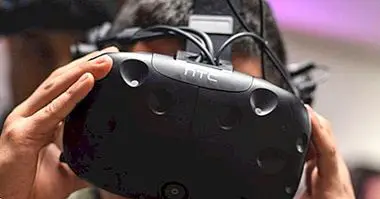The 10 most used cognitive-behavioral techniques
The search for different ways to help people manage and deal with different psychological and behavioral problems is a constant of psychology. Throughout the relatively short history of this discipline, different people and schools of thought have managed to develop more or less effective techniques to deal with such problems and disorders.
Some of the contributions that more scientific evidence has shown in the successful treatment of these problems come from the cognitive-behavioral paradigm, the predominant one at present. In the present article we will see ten cognitive-behavioral techniques of proven efficacy .
- Related article: "The 10 most effective types of psychological therapy"
The cognitive-behavioral paradigm
Born from the fusion between behavioral techniques and procedures that seek scientific knowledge based on the observable and the knowledge that behind the behavior there are different psychological processes that explain why we act, think and feel how we do it, the model or cognitive-behavioral approach is based on the work on the cognitive aspects in order to produce a significant and profound modification of the behavior.
We work on the inheritance left by behaviorism, applying and adapting numerous techniques typical of this current in order that behavioral modification is not something mechanical and temporary but that causes a change in the way of perceiving the reality and the existence of problems in the patients. We take into account aspects such as the processing of information, coping mechanisms, self-concept and self-esteem or other variables such as skills, beliefs and attitudes towards the world.
Through the methods derived from this approach very different mental problems are treated From a point of view validated by science and focused on the current problem, working from the present symptoms to obtain an improvement in the quality of life of the patient and a relief of their discomfort.
A dozen cognitive-behavioral techniques
Within the cognitive-behavioral paradigm there are multiple treatments, therapies and techniques that can be used in order to produce an improvement to the patient. Many of them are techniques arising from behaviorism to which cognitive elements have been added . Some of the techniques used are briefly explained below.
1. Exposure techniques
This type of techniques are used especially in the cases of phobias and anxiety disorders and impulse control . They are based on confronting the patient with the feared stimulus or generator of anxiety until it is reduced, so that he can learn to manage his behavior before him while at the cognitive level he restructures the thought processes that make him feel unwell before said stimulus or situation.
In general, a hierarchy of feared stimuli is carried out between the patient and the therapist, so that they can gradually approach and expose themselves gradually. The approach speed can vary greatly as the patient feels more or less able to cope with what is feared.
Exposure techniques can be applied in very different ways, both live and in imagination, and it is even possible to take advantage of the technological possibilities to apply exposure through virtual reality.
- Related article: "Types of phobias: exploring the disorders of fear"
2. Systematic desensitization
Although the procedure applied in the systematic desensitization is similar to that of the exposure, since it also establishes a hierarchy of anxiogenic stimuli to which the patient is going to be exposed, it differs from the previous techniques in the fact that previously has trained the patient in the performance of responses incompatible with anxiety.
A) Yes, it seeks to reduce anxiety and avoidance of situations and stimuli by performing behaviors that prevent it from appearing, and over time provoke a counterconditioning that ends up generalizing.
Different variants of this technique are the emotive staging (applied especially with children and using a pleasant context in which stimuli are introduced little by little), the emotional imagination (in which positive mental images are used to avoid anxiety as much as possible) or contact desensitization (in which the therapist would act as a model to teach how to act).
3. Cognitive restructuring
This technique is basic in the treatment of most psychic disorders, being part of almost all cognitive-behavioral techniques. It's based on the modification of the patient's thought patterns through different methods, identifying their own thought patterns and their influence on the patient's life and generating more adaptive and functional cognitive alternatives with the patient.
Thus, beliefs, attitudes and points of view are modified, all with the aim of making the person to interpret things differently, on the one hand, and to set different objectives and expectations, on the other. These modifications would have the power to make new habits appear and those routines that are not useful or that generate discomfort disappear.
4. Modeling techniques
Modeling is a type of technique in which an individual performs a behavior or interacts in a situation with the objective that the patient observe and learn a concrete way of acting so that you can imitate it . It is intended that the observer modify their behavior and / or thinking and provide them with tools to deal with certain situations.
There are different variants depending on whether the observer has to replicate the behavior, the model dominates from the beginning of performing the desired behavior or has similar resources to the patient so that an approximation is made to the objective, the number of people acting as a model or if the modeling is done live or through other means such as imagination or technology.
- Maybe you're interested: "Albert Bandura's Theory of Social Learning"
5. Inoculation of stress
This technique is based on the preparation of the subject in order to face possible stress situations. It is intended in the first place to help the patient to understand how stress can affect you and how you can cope , to later teach different cognitive and behavioral techniques as the others reflected here and finally make them practice in controlled situations that allow their generalization to everyday life.
The objective is for the person to get used to dealing with stressful situations in a rational way, without being blocked by their emotions.
6. Self-instruction training
Created by Meichenbaum, self-instruction training is based on their role in behavior. It is about the instructions with which we guide our own behavior by indicating what and how we are going to do something , which are colored by expectations towards the results to be obtained or to the effectiveness itself.
Certain problems such as low self-esteem or perception of self-efficacy can cause the behavior to be impaired and can not be done successfully or even avoided. This technique is intended to help the individual to be able to generate correct, realistic internal self-verbalizations that allow him to carry out the actions he wishes to perform.
The process happens because in the first place the therapist makes a modeling of the action to be performed indicating the steps aloud. Later the patient will carry out said action from the instructions that the therapist will recite . Then proceed to be the patient who self-instruct aloud, then repeat the process quietly and finally through subvocal speech, internalized.
This technique can be used by itself, although it is frequently incorporated as part of other therapies dedicated to the treatment of different disorders such as depression or anxiety.
7. Training in problem solving
The training in problem solving is a type of cognitive-behavioral treatment through which it is intended to help subjects to cope with certain situations that by themselves are not capable of solving.
In this type of technique, aspects such as the orientation toward the problem in question, the formulation of the problem, the generation of possible alternatives to solve it are worked on, making a decision regarding the most appropriate and the verification of your results. In short, it is about knowing how to focus on complicated situations in the most constructive way possible, without getting carried away by fears and anxiety.
8. Operative techniques for behavior modification
Although of behavioral origin, these types of techniques are also part of the cognitive-behavioral repertoire. Through this type of techniques it is fundamentally to provoke a modification in behavior through stimulation.
They allow both to motivate and contribute to learn new behaviors as well as to reduce them or modify them by applying reinforcements or punishments . Within the operant techniques we can find the shaping and chaining to enhance adaptive behaviors, the differential reinforcement to reduce behaviors or change them for others and the satiation, the time or overcorrection as a way to modify or extinguish the behaviors.
9. Self-control techniques
The ability of self-management is a fundamental element that allows us to be autonomous and adapt to the environment around us, keep our behavior and thoughts stable despite the circumstances and / or be able to modify them when necessary.However, many people have difficulties adapting their behavior, expectations or way of thinking to reality in an adaptive way, with which different disorders can occur.
Thus, self-control techniques are used to facilitate the learning of patterns of behavior in which impulsivity is appeased for the consideration of the future consequences that certain actions can bring.
Perform a workout that fortelezca self-control skills , as is achieved with Rehm's self-control therapy, can be used to control problems of various kinds such as those produced in depressive and anxious processes.
10. Relaxation and breathing techniques
Physical and psychic activation is an element of great importance when it comes to explaining problems such as anxiety and stress. The suffering caused by the presence of problems and difficulties can be partly reduced by relaxation techniques, learning from them to manage the bodily sensations so that it can also help to manage the mind.
Within this group we find the progressive relaxation of Jacobson, the autogenic training of Schultz or the breathing techniques.
Advantages of cognitive-behavioral techniques
Cognitive-behavioral techniques have shown a very high level of effectiveness in the treatment of various problems and psychic disorders. Through them it is possible to modify the behavior of the patient and contribute to the acquisition of more adaptive life and behavior habits, working and modifying also the cognitive base that induces the original behaviors.
With this type of techniques, the mind and behavior are stimulated, producing a clear improvement in a large number of cases. Its level of effectiveness is such that today it is considered the therapy of choice for most mental disorders .
Another great advantage of this type of technique is its ascription to the scientific method, being the therapies, techniques and cognitive behavioral treatments contrasted experimentally.
Disadvantages and limitations
Despite the great efficacy of these techniques in the treatment of the symptoms of disorders and mental problems, cognitive-behavioral techniques they have a series of limitations which makes them not always effective.
First, it highlights the fact that although they take into account the past when gathering information to understand the current problem, cognitive-behavioral techniques focus on the here and now, not making the therapeutic level too much emphasis on what is already occurred that may have caused the maladaptive behavior.
While these techniques They are very useful to treat the current symptom, mostly behind a mental disorder is a deep suffering caused by blockages or events experienced for a long time and that may end up generating the disorder. If the origin of this suffering is not treated and the patient is not able to cope, the disorder could reappear.
It also highlights the fact that these techniques, as a general rule, aim to eradicate what generates discomfort, but in the process it is not uncommon for rigid behaviors to be generated which, in turn, can cause other adaptation problems.
In addition, some studies have shown that many patients feel that this type of therapy does not take into account their condition, feeling misunderstood and having cases of poor adherence to treatment and abandonment of it. For these reasons have emerged other therapies such as third generation and others from other paradigms.
Bibliographic references:
- Almond, M.T. (2012). Psychotherapies CEDE Preparation Manual PIR, 06. CEDE: Madrid.
- Kahn, J.S .; Kehle, T.J .; Jenson, W.R. and Clark, E. (1990). Comparison of cognitive-behavioral, relaxation, and self-modeling interventions for depression among middle-school students. School Psychology Review, 19, 196-211.
- Olivares, J. and Méndez, F. X. (2008). Behavior Modification Techniques. Madrid: New library.
- Vila, J. & Fernández, M.C. (2004). Psychological treatments The experimental perspective. Madrid: Pyramid.



















